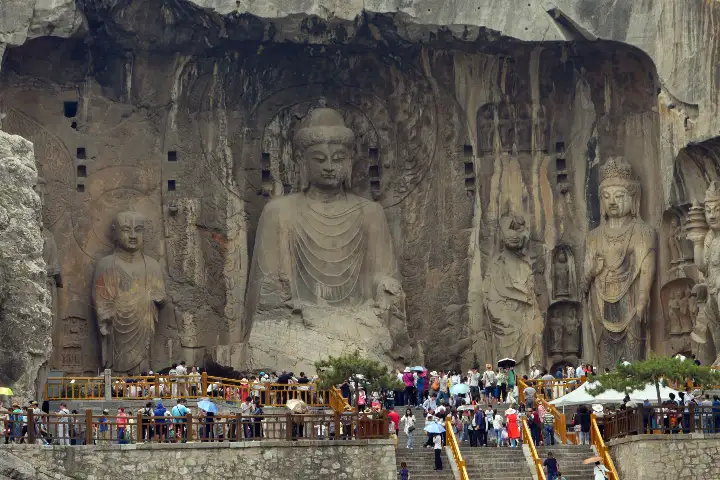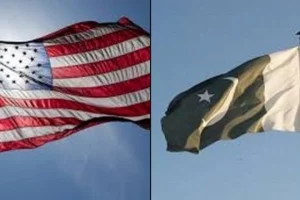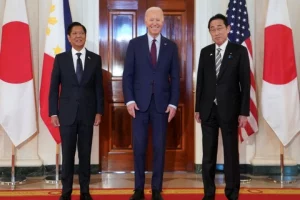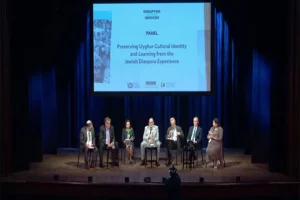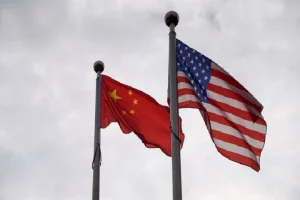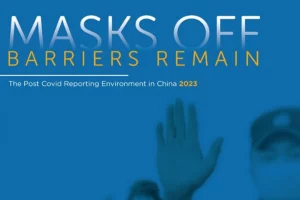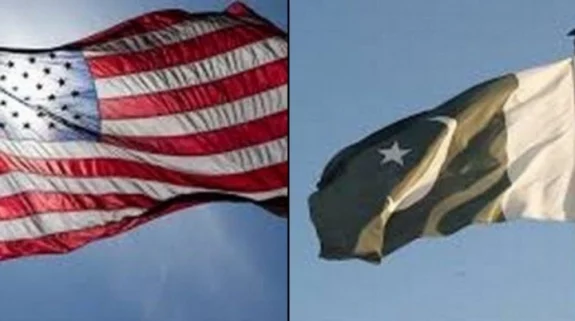India and China have shared more than two millennia of cultural interflow, and joined in the quest of ageless wisdom. Our dharma and our karma became interlinked through the vast stretches of Central Asia, ever since Chang Ch'ien brought back musical instruments and melodies from India to the Chinese capital Chang’an in 138 BC.
The name of these melodies has come down to us: it is MO-ho-tou-le. Mo-ho is clearly the Chinese transcription of maha ‘great’, and tou-Pe is a variant of Tou-k'u-le or Tokhara. The name of this melody suggests an Indian origin. This originally Indian melody was first known at Kucha where, as we know, Tocharian was spoken in later days. It was the center of Indian-influenced music in Central Asia, which later spread to China. At that early date Kucha must already have been under Indian cultural influence. In China, a son-in-law of Emperor Wu-ti (140-87 BC) wrote twenty-eight new tunes based on the Mo-ho-tou-le melody, which were played as military music. It is a strange coincidence of a historic leap that the Rag Tukhari occurs in the Holy Guru Granth Saheb.
The return of Chang Ch'ien from Hsi-yu, the Western World, to Chang’an in 129 BC was the opening of a regular road, as the Chinese realised the importance of other cultures. Xenophobia and the concept of Barbarians underwent change. Nomadic tribes traded silk with Central and Western Asia. The main purpose of the journey of Chang Ch'ien was defence: to find the whereabouts of the Hu barbarians who had been a major menace to Han-period China. The thorough-bred ‘heavenly horse’ (t’ien ma) was imported from Dawuan to improve the breed of horses during the Han dynasty. Chang Ch'ien was amazed to see in Bactria staves or walking sticks made of bamboo of Kiung and cloth of Shu, both from Sichuan. The Bactrians had purchased them in India.
To the Chinese, the way to the Western World, that is to India, became the Path of Sutras. Across the vast stretches of desert, in the void of the self, they heard the echoing of "I am the Truth." Travelling and traveller became one, one with the Eternal. The waterless deserts were the void of the self. The traveller trod not with his feet, but with his heart on wings. Courage tore the terror of the terrain, and despair turned to hope in the Supreme quest of a beyond without shores. The drop departed from its native home, found a shell and became a pearl.
The desert and oasis became an embodiment of Buddhist teaching. The desert symbolises hell and the oasis paradise, or in the broader perimeters of Buddhist philosophy "everything flows and nothing is permanent." Itsing speaks of the hardships and perils that had to be braved to reach India: "No doubt, it is great merit and fortune to visit the Western country (India) in search of the Dharma but at the same time it is an extremely difficult and perilous undertaking………… Many days have passed without food, even without a drop of water. I was always worried and no spirit was left in me..… If, however, a monk happened to reach India after such a perilous journey, he would find no Chinese monastery there. There was no fixed place to settle down. We had to move from place to place like a blade of grass swept by the wind.”
The monk Hsuan-k’uei, who could not come to India as he suffered from illness, wrote: My heart goes to the sacred land of Budhist temples. I dream to move in the land of the Budha. Will that auspicious day ever come, when with the help of a cup or bowl only, I shall be able to cross and reach India? Shall I be able to witness the magnificent flow of Dharma in India?”
|
|
|
|
|
|
The sandy vastness that led to India, was the path of sutras, first and foremost the way of texts and translators, of scriptures and schools of thought, of the triumphs of Buddhism as the mental and material culture of East Asia. The development of Buddhist temple architecture, new stylistic features in Chinese that arose from translations of Buddhist texts, the Buddhist plurality of inhabited worlds as opposed to the Chinese earth-centered worldview, and various elements of cultural transmission, opened up Sino centrism to wider horizons. The several people inhabiting the route participated in the cultural exchange for a millennium. The earliest and most celebrated of the masters was the Parthian A Shih-kao who organised the first translation team, after his arrival at Loyang in AD 148.
As early as 251 A.D. we find Kaang Seng-hui rendering the jataka form of the Ramayana into Chinese, and in 472 A.D. appeared in another Chinese translation of the avadana of Dasaratha from a lost Sanskrit text by Kekaya. A long tradition in narrative and dramatic form created the great episodic cycle of the 16th century classic Chinese novel known as “Monkey" or the Hsi-yu-chi which amalgamated among other elements the extensive travels of Hanuman in quest of Sita. This motif enriched popular culture and folklore and also contributed to the development of Chinese secular literature.
Like the Indian Suryavamsha, the Sun is a symbol of the sovereign upon earth in China. The sun is defined as corresponding to that which is solid or complete. It is a symbol of virtuous government. It is powerless when obscured by clouds: so, a government is without effect if evil counsel intervenes. As Surya shines on high and low alike, the people should, similarly, be impartially treated. In the Chinese work Fo-pen-hsing-ching, which was translated from Sanskrit by Pao-yun in 427-449, it is stated that Mother Maya saw the future Buddha as an elephant entering her womb. The elephant carried on its head "the solar essence”, and the Bodhisattva riding the elephant is compared to "the luminous pearl of the sun" and Mother Maya states that "sun-light has entered her womb". With the introduction of Buddhism into China the Surya became symbolic of nobility, purity, and light. In the cult of the Lord of Healing or Bhaisajyaguru, suryaprabha and Chandraprabha represent eternity of time.
In China, it was believed that the Lo-hou hsing or Rahu is an unlucky star which tries to devour the sun at the time of eclipse. The evil spirit of this star is said to have retarded the birth of Sakyamuni Buddha for six years. The temple drums and gongs are loudly beaten and crackers exploded in China to prevent this demon from devouring the sun.
(Prof. Lokesh Chandra is a renowned scholar, specializing in the study of the Vedic period, Buddhism and the Indian arts. Views expressed are personal and exclusive to India Narrative)






